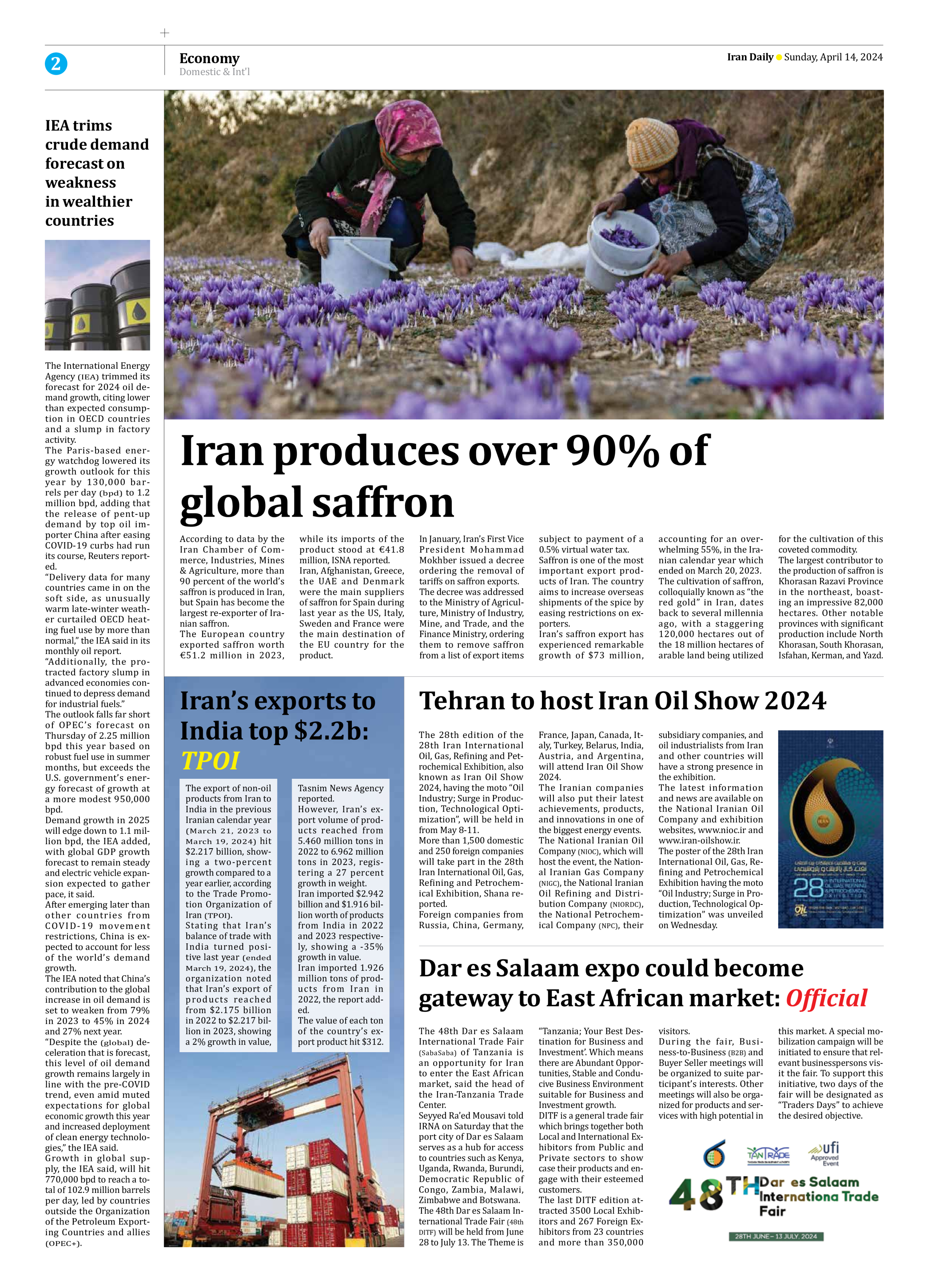
Copy in clipboard...
Iran produces over 90% of global saffron
The European country exported saffron worth €51.2 million in 2023, while its imports of the product stood at €41.8 million, ISNA reported.
Iran, Afghanistan, Greece, the UAE and Denmark were the main suppliers of saffron for Spain during last year as the US, Italy, Sweden and France were the main destination of the EU country for the product.
In January, Iran’s First Vice President Mohammad Mokhber issued a decree ordering the removal of tariffs on saffron exports.
The decree was addressed to the Ministry of Agriculture, Ministry of Industry, Mine, and Trade, and the Finance Ministry, ordering them to remove saffron from a list of export items subject to payment of a 0.5% virtual water tax.
Saffron is one of the most important export products of Iran. The country aims to increase overseas shipments of the spice by easing restrictions on exporters.
Iran’s saffron export has experienced remarkable growth of $73 million, accounting for an overwhelming 55%, in the Iranian calendar year which ended on March 20, 2023.
The cultivation of saffron, colloquially known as “the red gold” in Iran, dates back to several millennia ago, with a staggering 120,000 hectares out of the 18 million hectares of arable land being utilized for the cultivation of this coveted commodity.
The largest contributor to the production of saffron is Khorasan Razavi Province in the northeast, boasting an impressive 82,000 hectares. Other notable provinces with significant production include North Khorasan, South Khorasan, Isfahan, Kerman, and Yazd.







